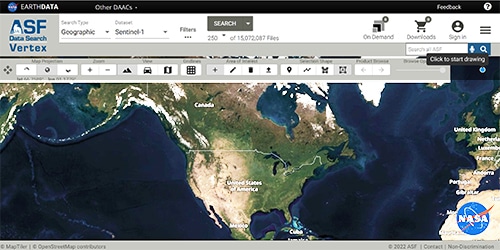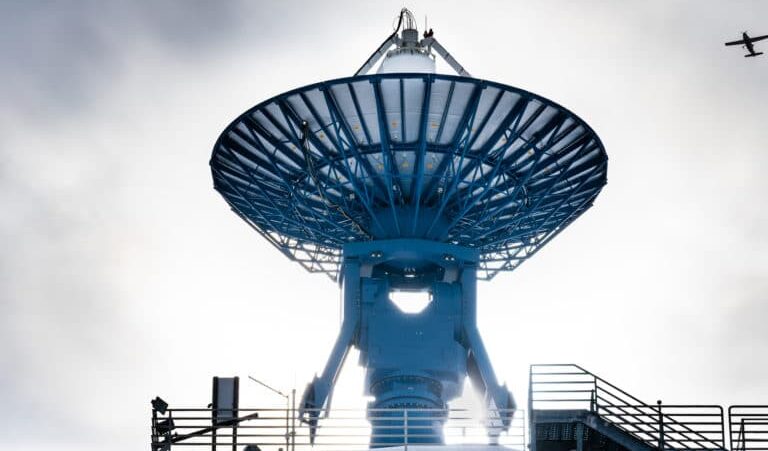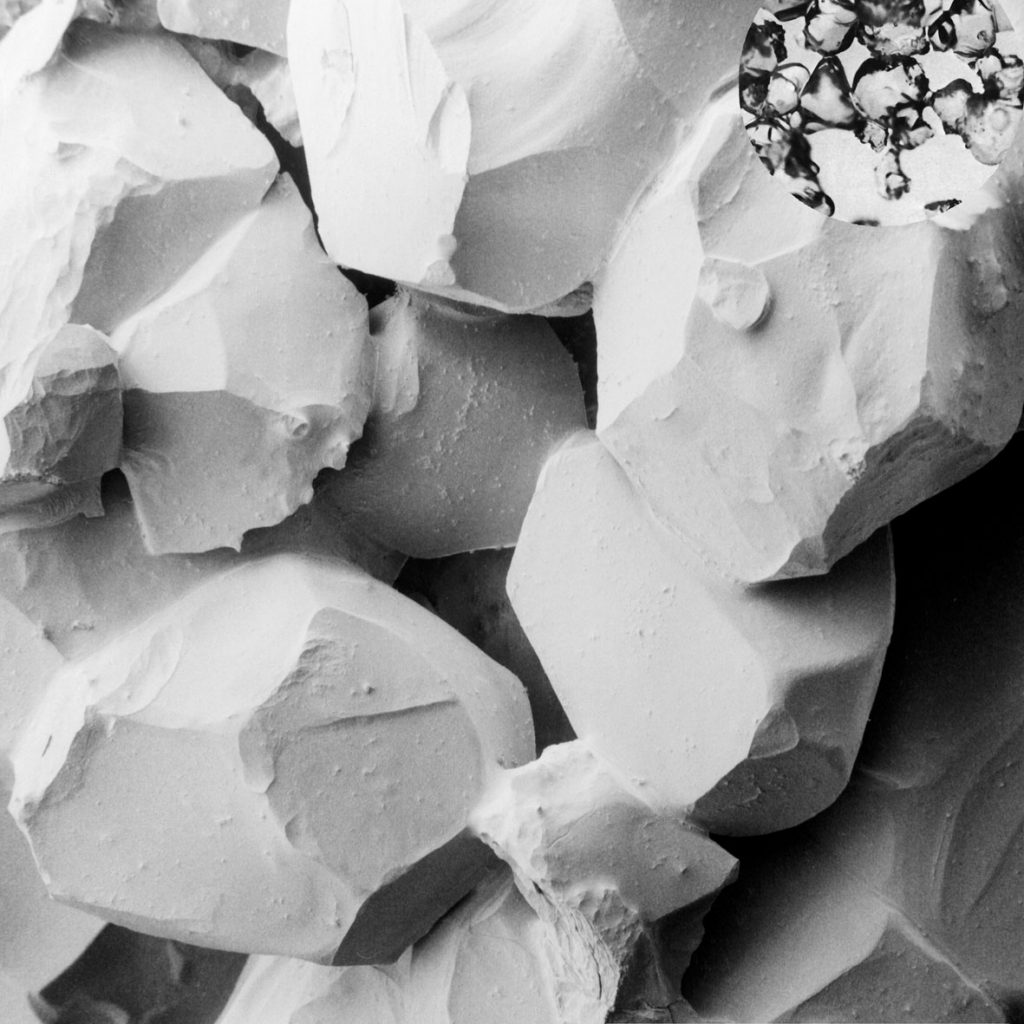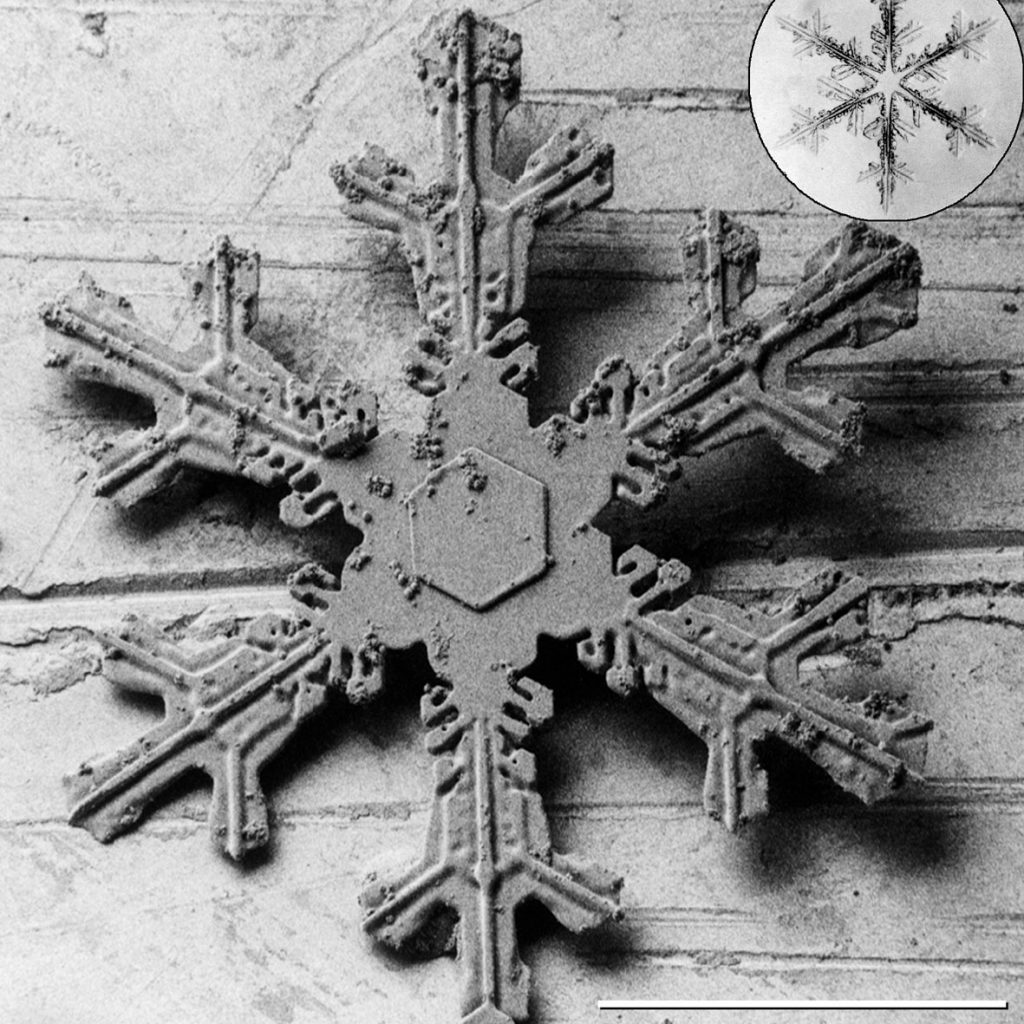From Snowflakes to Rivers of Ice
Glaciers are massive and incredibly powerful, but they begin with small snowflakes. Imagine how many snowflakes make a glacier as snow gradually changes into glacier ice.
Recipe for a Glacier
- Snowfall on a glacier is the first step in the formation of glacier ice.
- As snow builds up, snowflakes are packed into grains.
- The weight of the overlying snow causes the grains below to become coarser and larger. (Fresh snow is about 90 percent air.)
- Melted snow quickly refreezes forming ice. How the snow changes and how much time it takes to develop into glacier ice depends on the temperature.
In an area where there is more snowfall than summer snow melt, perennial snow patches appear in the mountains and remain at the end of summer. Glaciers can form in areas where summer temperatures are too low for all of the snow to melt.
When the weight of the ice and snow (thickening snowfield) becomes great enough, they begin to move (flow down-slope). When signs of flow appear in a perennial snow patch, a glacier has begun! No longer only a mass of ice and snow, it is a glacier!
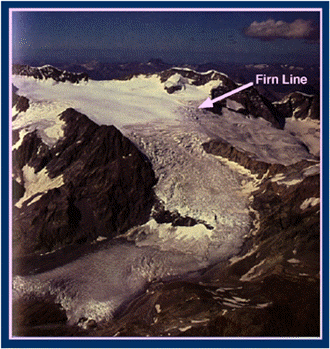
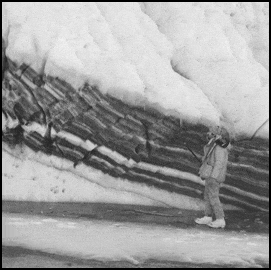
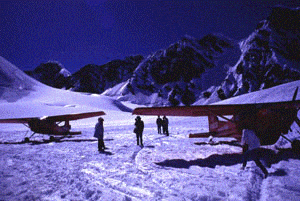
All About Firn
- Firn is wetted snow that has survived one summer without being transformed to ice. It is in the metamorphic process of snow-becoming-ice. Eventually, firn changes into solid glacier ice.
- Firn takes about a year to form. (In colder parts of the world, this could take as long as 100 years.)
- Firn becomes glacier ice when the interconnecting air passages between the grains are sealed off. In glacier ice, air is present only as bubbles. Ice may become denser by more compression of the bubbles.
Remember, the scanning electron micrographs of the firn crystals and the snowflake shown in What is a Glacier? Here again, you can see the great difference between snow and firn. There is also a great difference between firn crystals and glacier ice crystals.
How do Glaciers Form?
Vocabulary
firn
perennial
firn line
metamorphic
compression
snowflake
gravity
Review Questions
(Some of the answers may come from the vocabulary list.)
- The formation of a huge glacier begins with a single, small _____________?
- What types of summer temperatures need to occur for a glacier to form?
- How does over-lying weight affect the snow?
- What is wetted snow that has survived one summer without being transformed into glacier ice?
- How long does it take for firn to form?
- When does firn become glacial ice?
- What is the line that separates bare ice from snow at the end of the ablation season?
- What is the difference between a perennial snow patch and a glacier?
- What causes a glacier to move downhill?
Brain Challenge!
What would Alaska look like if all of the glaciers melted?
Exercise: Circle the Facts
Circle all the statements that are true about each word is given (more than one statement may be true).
Firn:
A. is wet snow that has survived one summer without being completely turned into ice
B. are plants your cat likes to eat
C. takes a year to form
D. becomes glacier ice when it is more compressed
E. is what you call snow when it’s freshly fallen on the glacier
Snowflake(s):
A. change to firn
B. is the name of your pet rattlesnake
C. is the first step in the formation of glacier ice
D. is a six-sided crystal
E. can’t form glacier ice
Snow on a glacier:
A. is only used for snowball fights
B. builds up on a glacier in the accumulation zone
C. causes the grains of snow beneath it to enlarge
D. will melt instantly because the glacier is so hot
E. will feed all the ice worms
Project: Firn Structure
You’ll need:
- snow or ice shavings from ice cubes or freezer frost
- very cold water (close to freezing)
- a small container that you can seal
- a larger container
- Mix the ice in your small container with enough water to make a slushy snow. Seal the container. Next, make an ice bath with a mixture of half water and half ice and sink your sealed container into the bath. If you’re able, put the whole experiment into a refrigerator.
- After 24 hours, remove the sealed container and drain all the water. Use some tissue to pat dry the snow.
- Reseal the container and put it back in the ice bath for a few hours.
- When this is done, pull the sealed container out and look at the remaining ice with a magnifying lens of at least 5x magnification. You should see clusters of rounded ice particles, very similar to the structure of firn.
(Courtesy of Glaciers of North America, By S. Ferguson)


